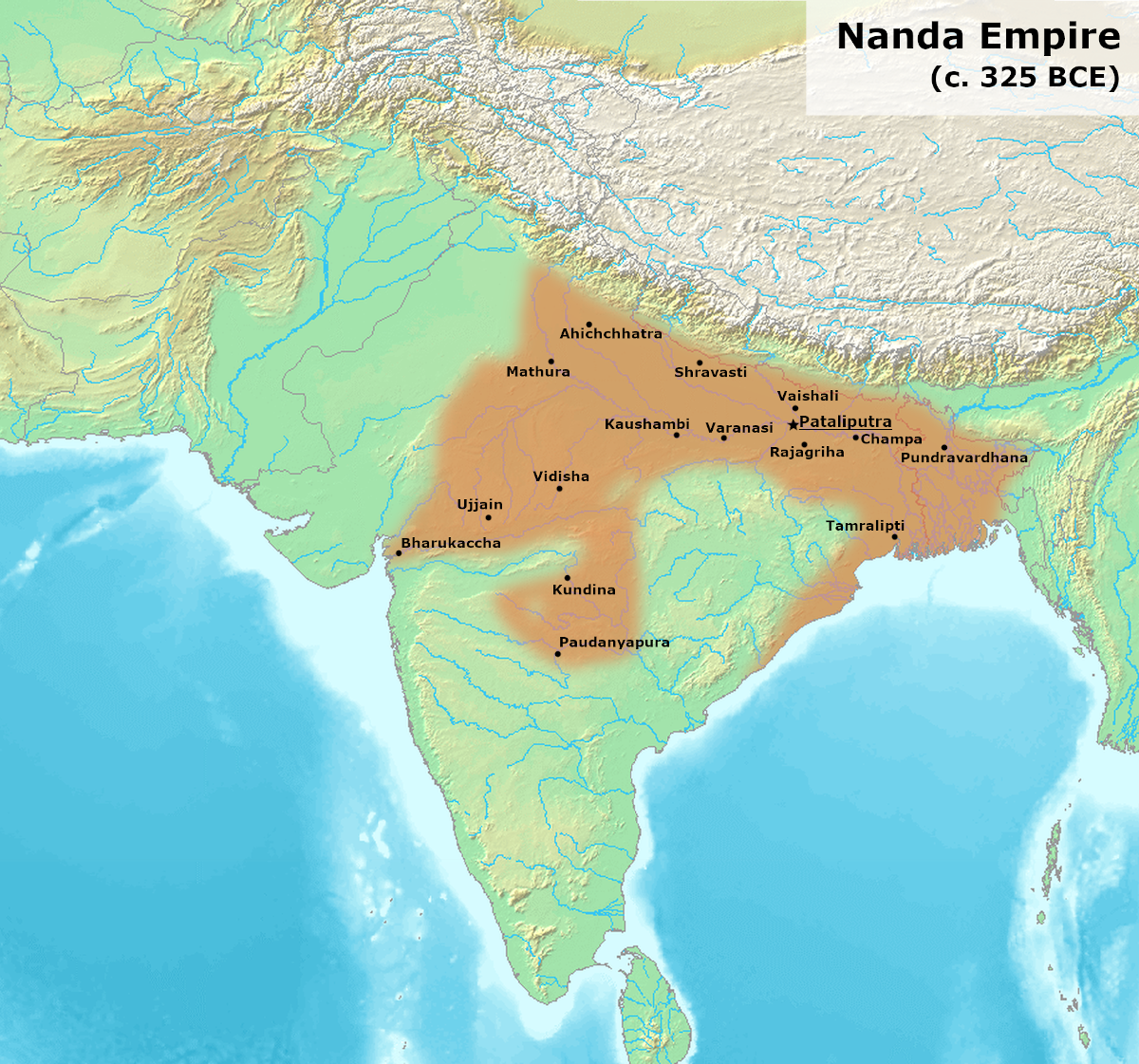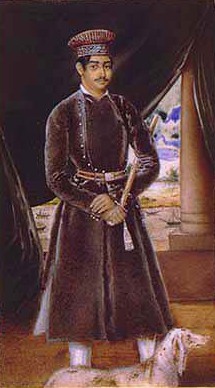|
Rajamandala
The Rajamandala (or ''Raja-mandala'' meaning "circle of kings"; , ''mandala'' is a Sanskrit word that means "circle") was formulated by the Indian author Chanakya (Kautilya) in his work on politics, the ''Arthashastra'' (written between 4th century BCE and 2nd century CE). It describes circles of friendly and enemy states surrounding the king's (''raja'') state.Avari, Burjor (2007). India, the Ancient Past: A History of the Indian Sub-continent from C. 7000 BC to AD 1200' Taylor & Francis. . pp. 188-189. Also known as Mandala theory of foreign policy or Mandala theory, the theory has been called as one of Kautilya's most important postulations regarding foreign policy. Terminology The term draws a comparison with the mandala of the Hindu and Buddhist worldview; the comparison emphasises the radiation of power from each power center, as well as the non-physical basis of the system. The terminology was revived two millenniums later as a result of Twentieth Century efforts to compreh ... [...More Info...] [...Related Items...] OR: [Wikipedia] [Google] [Baidu] |
The Enemy Of My Enemy Is My Friend
"The enemy of my enemy is my friend" is an ancient proverb which suggests that two parties can or should work together against a common enemy. The exact meaning of the modern phrase was first expressed in the Latin phrase "Amicus meus, inimicus inimici mei" ("my friend, the enemy of my enemy"), which had become common throughout Europe by the early 1700s, while the first recorded use of the current English version came in 1884. Examples Rajamandala A Sanskrit treatise on statecraft, the '' Arthashastra'' of Kautilya states: A neighboring power would be the first to dispute control of territory, and therefore Kautilya finds neighboring kings to be natural enemies of any conqueror. A king whose territories border those of the enemy would also have this relationship with them, and therefore be a natural ally. This system of relationships was termed Rajamandala (meaning ''circle of kings'') and informed the foreign policy of Chandragupta's Empire. This early theory of geo ... [...More Info...] [...Related Items...] OR: [Wikipedia] [Google] [Baidu] |
Cakravartin
A ''chakravarti'' ( sa, चक्रवर्तिन्, ''cakravartin''; pi, cakkavatti; zh, 轉輪王, ''Zhuǎnlúnwáng'', "Wheel-Turning King"; , ''Zhuǎnlún Shèngwáng'', "Wheel-Turning Sacred King"; ja, 転輪王, ''Tenrin'ō'' or , ''Tenrinjōō'') is an ideal (or idealized) universal ruler, in the history, religion, and mythologies of India. The concept is present in the cultural traditions of Vedic, Hindu, Jain and Buddhist narrative myths and lore. There are three types of chakravarti: ''chakravala chakravarti'', a king who rules over all four of the continents (i.e., a universal monarch); ''dvipa chakravarti'', a ruler who governs only one of those continents; and ''pradesha chakravarti'', a monarch who leads the people of only a part of a continent, the equivalent of a local king. Dvipa chakravarti is particularly one who rules the entire Indian subcontinent (as in the case of the Maurya Empire, despite not conquering the southern kingdoms). The first r ... [...More Info...] [...Related Items...] OR: [Wikipedia] [Google] [Baidu] |
Chanakya
Chanakya (Sanskrit: चाणक्य; IAST: ', ; 375–283 BCE) was an ancient Indian polymath who was active as a teacher, author, strategist, philosopher, economist, jurist, and royal advisor. He is traditionally identified as Kauṭilya or Vishnugupta, who authored the ancient Indian political treatise, the ''Arthashastra'', a text dated to roughly between the fourth century BCE and the third century CE. As such, he is considered the pioneer of the field of political science and economics in India, and his work is thought of as an important precursor to classical economics.Waldauer, C., Zahka, W.J. and Pal, S. 1996Kauṭilya's Arthashastra: A neglected precursor to classical economics ''Indian Economic Review'', Vol. XXXI, No. 1, pp. 101–108. His works were lost near the end of the Gupta Empire in the sixth century CE and not rediscovered until the early 20th century. Around 321 BCE, Chanakya assisted the first Mauryan emperor Chandragupta in his rise to power and is ... [...More Info...] [...Related Items...] OR: [Wikipedia] [Google] [Baidu] |
Arthashastra
The ''Arthashastra'' ( sa, अर्थशास्त्रम्, ) is an Ancient Indian Sanskrit treatise on statecraft, political science, economic policy and military strategy. Kautilya, also identified as Vishnugupta and Chanakya, is traditionally credited as the author of the text.: "References to the work in other Sanskrit literature attribute it variously to , and . The same individual is meant in each case. The '' Pańcatantra'' explicitly identifies Chanakya with ." The latter was a scholar at Takshashila, the teacher and guardian of Emperor Chandragupta Maurya. Some scholars believe them to be the same person, while a few have questioned this identification.; : "while in his character as author of an ''arthaśāstra'' he is generally referred to by his '' gotra'' name, ;": "T. Burrow... has now shown that Cāṇakya is also a ''gotra'' name, which in conjunction with other evidence makes it clear that we are dealing with distinct persons, the minister Cāṇaky ... [...More Info...] [...Related Items...] OR: [Wikipedia] [Google] [Baidu] |
Social Anthropology
Social anthropology is the study of patterns of behaviour in human societies and cultures. It is the dominant constituent of anthropology throughout the United Kingdom and much of Europe, where it is distinguished from cultural anthropology. In the United States, social anthropology is commonly subsumed within cultural anthropology or sociocultural anthropology. Comparison with cultural anthropology The term ''cultural'' anthropology is generally applied to ethnographic works that are holistic in spirit, are oriented to the ways in which culture affects individual experience, or aim to provide a rounded view of the knowledge, customs, and institutions of a people. ''Social'' anthropology is a term applied to ethnographic works that attempt to isolate a particular system of social relations such as those that comprise domestic life, economy, law, politics, or religion, give analytical priority to the organizational bases of social life, and attend to cultural phenomena as somewha ... [...More Info...] [...Related Items...] OR: [Wikipedia] [Google] [Baidu] |
Mandala
A mandala ( sa, मण्डल, maṇḍala, circle, ) is a geometric configuration of symbols. In various spiritual traditions, mandalas may be employed for focusing attention of practitioners and adepts, as a spiritual guidance tool, for establishing a sacred space and as an aid to meditation and trance induction. In the Eastern religions of Hinduism, Buddhism, Jainism and Shinto it is used as a map representing deities, or especially in the case of Shinto, paradises, kami or actual shrines. A mandala generally represents the spiritual journey, starting from outside to the inner core, through layers. Hinduism In Hinduism, a basic mandala, also called a '' yantra'', takes the form of a square with four gates containing a circle with a center point. Each gate is in the general shape of a T. Mandalas often have radial balance. A '' yantra'' is similar to a mandala, usually smaller and using a more limited colour palette. It may be a two- or three-dimensional geometric ... [...More Info...] [...Related Items...] OR: [Wikipedia] [Google] [Baidu] |
Social Anthropologist
Social anthropology is the study of patterns of behaviour in human societies and cultures. It is the dominant constituent of anthropology throughout the United Kingdom and much of Europe, where it is distinguished from cultural anthropology. In the United States, social anthropology is commonly subsumed within cultural anthropology or sociocultural anthropology. Comparison with cultural anthropology The term ''cultural'' anthropology is generally applied to ethnographic works that are holistic in spirit, are oriented to the ways in which culture affects individual experience, or aim to provide a rounded view of the knowledge, customs, and institutions of a people. ''Social'' anthropology is a term applied to ethnographic works that attempt to isolate a particular system of social relations such as those that comprise domestic life, economy, law, politics, or religion, give analytical priority to the organizational bases of social life, and attend to cultural phenomena as somewh ... [...More Info...] [...Related Items...] OR: [Wikipedia] [Google] [Baidu] |
Mandala (political Model)
''Maṇḍala'' is a Sanskrit word meaning 'circle'. The mandala is a model for describing the patterns of diffuse political power distributed among Mueang or Kedatuan (principalities) in medieval Southeast Asian history, when local power was more important than the central leadership. The concept of the mandala balances modern tendencies to look for unified political power, eg. the power of large kingdoms and nation states of later history – an inadvertent byproduct of 15th century advances in map-making technologies. In the words of O. W. Wolters who further explored the idea in 1982: The map of earlier Southeast Asia which evolved from the prehistoric networks of small settlements and reveals itself in historical records was a patchwork of often overlapping mandalas. It is employed to denote traditional Southeast Asian political formations, such as federation of kingdoms or vassalized polity under a center of domination. It was adopted by 20th century European hist ... [...More Info...] [...Related Items...] OR: [Wikipedia] [Google] [Baidu] |
Sanskrit
Sanskrit (; attributively , ; nominalization, nominally , , ) is a classical language belonging to the Indo-Aryan languages, Indo-Aryan branch of the Indo-European languages. It arose in South Asia after its predecessor languages had Trans-cultural diffusion, diffused there from the northwest in the late Bronze Age#South Asia, Bronze Age. Sanskrit is the sacred language of Hinduism, the language of classical Hindu philosophy, and of historical texts of Buddhism and Jainism. It was a lingua franca, link language in ancient and medieval South Asia, and upon transmission of Hindu and Buddhist culture to Southeast Asia, East Asia and Central Asia in the early medieval era, it became a language of religion and high culture, and of the political elites in some of these regions. As a result, Sanskrit had a lasting impact on the languages of South Asia, Southeast Asia and East Asia, especially in their formal and learned vocabularies. Sanskrit generally connotes several Indo-Aryan lang ... [...More Info...] [...Related Items...] OR: [Wikipedia] [Google] [Baidu] |
Indian Feudalism
Indian feudalism refers to the feudal society that made up India's social structure until the Mughal Dynasty in the 16th century. The Guptas and the Kushans played a major role in the introduction and practice of feudalism in India, and are examples of the decline of an empire caused by feudalism. Terminology Use of the term feudalism to describe India applies a concept of medieval European origin, according to which the landed nobility held lands from the Crown in exchange for military service, and vassals were in turn tenants of the nobles, while the peasants (villeins or serfs) were obliged to live on their lord's land and give him homage, labor, and a share of the produce, notionally in exchange for military protection. Feudalism is most likely introduced to India when the Kushan Dynasty from Central Asia invaded India and introduced new policies of their own. The term Indian feudalism is used to describe taluqdar, zamindar, jagirdar, ghatwals, mulraiyats, sardar, mank ... [...More Info...] [...Related Items...] OR: [Wikipedia] [Google] [Baidu] |
Anthropology Of Religion
Anthropology of religion is the study of religion in relation to other social institutions, and the comparison of religious beliefs and practices across cultures. History Al-Biruni (973–1048), wrote detailed comparative studies on the anthropology of religions and cultures across the Mediterranean Basin (including the so-called "Middle East") and the Indian subcontinent. He discussed the peoples, customs, and religions of the Indian subcontinent. In the 19th century cultural anthropology was dominated by an interest in cultural evolution; most anthropologists assumed a simple distinction between "primitive" and "modern" religion and tried to provide accounts of how the former evolved into the latter. In the 20th century most anthropologists rejected this approach. Today the anthropology of religion reflects the influence of, or an engagement with, such theorists as Karl Marx (1818-1883), Sigmund Freud (1856-1939), Émile Durkheim (1858-1917), and Max Weber (1864-1920). Anth ... [...More Info...] [...Related Items...] OR: [Wikipedia] [Google] [Baidu] |






